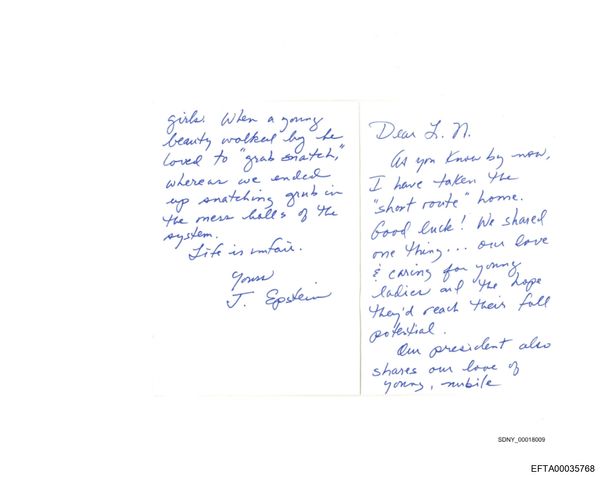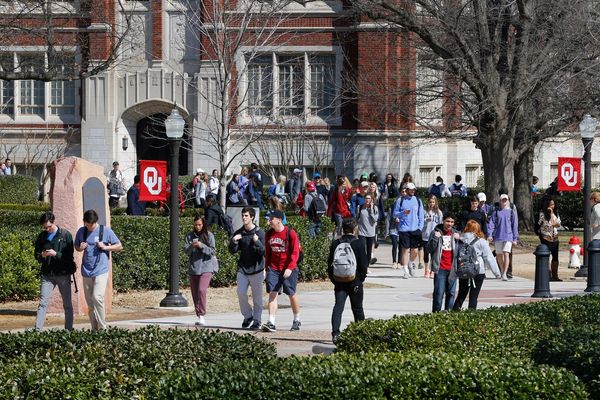
As the Kremlin took urgent measures to stabilise the plummeting rouble last week, one thing became clear: rampant spending on its war machine and social welfare programmes could not go on for ever. Few observers believe the Russian economy is in danger of imminent collapse. But it has reached a point, they say, where the Kremlin may have to weigh the cost of spending trillions of roubles on its war with Ukraine, and withstanding unprecedented sanctions, while maintaining prewar levels of public spending.
“In the grand scheme of things, as long as Russia continues to spend so madly – both war spending and on expensive imports – the rouble is not going to improve fundamentally,” said Alexey Eremenko, associate director at consultancy Control Risks. “There’s a structural issue underlying it all … A good question is whether we are at the point yet where the Kremlin has to seriously slash war spending or accept serious damage to the public welfare.”
As the rouble fell last week, crossing the psychological barrier of 100 to the dollar, Russia’s central bank responded by raising interest rates to 12%, the first time it has increased the cost of borrowing since the early days of the war. After a meeting last Wednesday between Vladimir Putin and his top officials, business daily Vedomosti reported that plans were being drawn up for informal capital controls that could see companies forced to convert more of their export revenues into roubles. The measures could also be applied to dividends and loans.
Putin is set to stand for re-election next year and the Kremlin typically lavishes money on the public before the vote to ensure an enthusiastic turnout for the fifth-term presidential hopeful. But insiders say it is ready to stay the course with a hobbled economy, emboldened by its belief that the population has largely resigned itself to a long war and international isolation.
“There’s not going to be some economic catastrophe or [a decision] to stop the war,” said a former senior Russian official. “In democratic conditions, when the economy gets worse, people vote for a different government. This is not a democratic regime. It will easily survive this. People will just have to tighten their belts.”
Closed economy

At a meeting with Putin, Sergey Chemezov, the powerful head of state-owned defence conglomerate Rostec, bragged about the long hours his workers were putting in at weapons factories across the country. Wages were up 17.2% at Rostec, he said, because its factories were working “on weekends, on holidays and at night, and these days are paid, of course, at a higher rate”.
Putin barely asked about the costs, telling Chemezov earlier this month that Russia needed to further increase production of the “newest weapons systems”, including T-90 tanks, aircraft and Lancet drones.
The new realities of Russia’s wartime economy have further empowered hawks close to Putin such as Chemezov, who are capitalising on the Kremlin’s insatiable military demand. Reuters, citing a government document, said last week that Russia had doubled its defence spending target to $100bn, a third of all public expenditure.
“A lot of domestic stakeholders are happy about this scenario,” said Alexander Gabuev, director of the Carnegie Russia Eurasia Centre. “A lot of people will be tremendously rich from this.”
That boom in state spending has fuelled the Russian economy through the past 18 months. The International Monetary Fund forecasts that Russia’s GDP will grow by 1.5% this year, formally outstripping the UK and Germany.
“They say, ‘Look, our GDP is growing’, but it’s basically being driven by tank production,” said Eremenko. “It’s not good for the public welfare.”
In another meeting, Putin said inflation had already affected small and medium-sized businesses in the private sector, and admitted that the economy was being driven in large part by military spending. One Moscow headhunter said salary expectations were “significantly higher” while company offers were remaining static.
“The defence industry is pulling other industries along with it, propelling demand for imports, sustaining GDP and putting money in ordinary Russians’ pockets,” wrote Alexandra Prokopenko, a former adviser to the Russian central bank. “To retain personnel, other sectors are also having to raise salaries. The groundwork for runaway inflation has been laid.”
Chinese lifeline
The Russian economy has in part been sustained by a club of countries that have not imposed sanctions and are facilitating the supply of goods and services to Russia, offering a crucial lifeline.
Chief among them is China, which has provided Russia with substitutes for western technology, including consumer goods such as mobile phones and cars, as well as industrial tools and machines. Total trade rose more than 30% in 2022, and is on track for a similar surge in 2023.
With China undergoing a significant slump, Russia was a “bright spot and an increasingly important market for Chinese manufacturers”, said Gabuev.

And with western markets closing, Russian oil and gas is flowing towards the east, mostly to China and India, according to the International Energy Agency.
“China was a significant partner anyway before the sanctions, but now the dependency is going through the roof,” said Gabuev.
The relationship is also driven by the US’s tech war on China. While some Chinese banks have avoided the Russian market for fear of secondary sanctions, more companies think US restrictions on hi-tech exports and investment to China mean they should invest in Russia.
“A growing number of Chinese companies are saying we’re going to get sanctioned anyway, we’re going to be deprived of access to western technology anyway,” said Gabuev. “If we get sanctioned regardless of what we do in Russia, why not exploit commercial opportunities there as well?”
Sanctions holes
Internal data from the Russian customs agency shows imports rebounding to close to their prewar levels, researchers say, although at considerably higher prices. Those imports have helped sustain vulnerable industries, such as aviation, and Kremlin priorities, but the foreign currency needed to purchase them is driving down the rouble.
Verstka, an independent Russian news outlet, recently catalogued a “sanctions hole” – where anything from semiconductors to aeroplane parts to iPhones could be routed and re-exported into Russia through firms in China, Turkey or the UAE, or via Armenia, Kazakhstan and other former Soviet republics.
While not a replacement for prewar trade, these goods allow the Russian economy to hobble forward. They include highly scrutinised items like microchips for use in the Russian war effort, among them ones made by US producers such as Xilinx and Texas Instruments, or processors from Intel. The technology was often bought by companies in Hong Kong or China and re-exported to Russia, the data showed.

Ukrainian officials have identified dozens of western components in the cruise missiles that continue to strike the country.
“Everything is flowing into Russia in large quantities,” said Erlend Bjørtvedt, founder of Norway-based risk consultancy Corisk, citing his own firm’s own analysis of Russian customs data. “The components are flowing in – a lot through China, of course, and other Asian countries, but also some directly from the EU.”
Convoluted global trade rules can make it difficult to enforce sanctions on some goods, such as US and EU aircraft parts, which have been banned from export to Russia but continue to flow in. The parts could languish in customs zones for years after arriving in a country, said Bjørtvedt, so it was hard to differentiate between new and prewar deliveries.
To ship crude oil abroad and earn much-needed foreign currency, Russia is in part turning to a “dark fleet” that skirts western price caps. As, this summer, Urals crude topped $60 a barrel – the price cap imposed by G7 countries – recognisably Greek ships in Russian ports on the Black Sea and Sea of Azov were suddenly replaced by older tankers with murky ownership structures and obscure insurers.
The size of the Russian “dark fleet” had ballooned to nearly 500 ships, said Michelle Wiese Bockmann, senior analyst at Lloyd’s List Intelligence, who has written extensively on Russia’s use of tankers to exploit regulatory and oversight gaps. “There’s a playbook for dark fleet shipping that has been perfected,” she said, adding that it began with the first sanctions against Iran in the 2010s. “Iran started it, Venezuela improved on it, and Russia has put it on steroids.”
Further economic control
Some foreign companies have found themselves trapped in the Russian market as the Kremlin’s influence on both domestic and foreign business grows. Russia took control of the local subsidiaries of both Danone, the French food conglomerate, and Carlsberg, the drinks giant, when Putin signed executive orders that put them both under “temporary administration”.
Last week Cees ’t Hart, Carlsberg’s chief executive, admitted that the company had lost contact with its employees in Russia and had “limited contact” with local authorities.
The new manager of Danone Russia is a nephew of Ramzan Kadyrov, the leader of Chechnya, in what appears to be a reward for his support for the Ukraine war.
Unilever, which has been criticised for remaining in the Russian market, has said leaving is “not straightforward” because its subsidiaries would be “appropriated and then operated” by Russia.
The economic outlook for Russia is far gloomier than it was before the invasion. The Kremlin’s pivot toward China and other markets, sanctions-busting, and other workarounds cannot make up for direct access to western markets or technology. And the rouble’s rapid devaluation could force the Kremlin to make painful decisions on public spending while managing the rouble exchange rate and rising inflation.
After a year of bluster, the Russian economy appears to finally be settling into a new normal, and the Kremlin still believes that it can manage to continue the war effort.
“It can survive like this for 100 years,” said the former senior official. “They’ll say it’s a temporary [setback]. But they will believe that there won’t be a catastrophe or a collapse, because people have nowhere else to go.”







